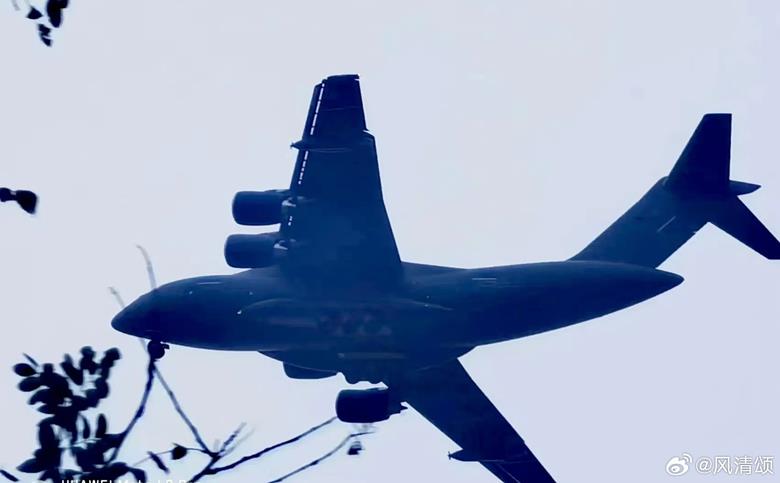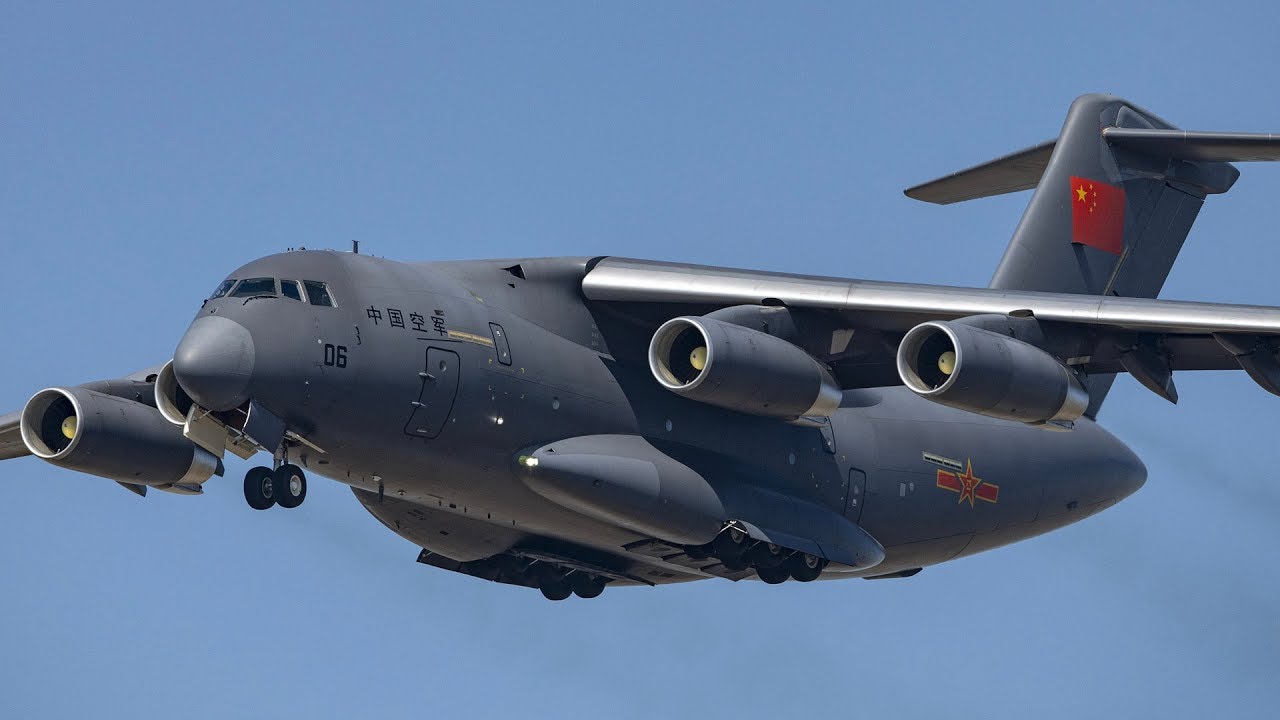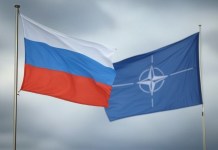China’s ambition to project power beyond the first chain of islands has been boosted as its largest multi-role tanker aircraft, Y-20U, powered by four Shenyang WS-20, recently broke cover.
The Y-20, officially called “Kunpeng” after a mythical Chinese bird and nicknamed “Chubby Girl” for its appearance, makes China the third country after Russia and the US to design and develop its heavy military transport aircraft.
Unlike the previous Russian engines powering the variants of Y-20, the new engines will give it far superior endurance and air-refueling capability that will increase its reach much beyond the first island chain, a string of islands encumbering the seas around China.
The first island chain consists of a group of islands, including Taiwan, Okinawa, and the Philippines, which China sees as the first line of defense. The “second island chain” in the Western Pacific runs from south-eastern Japan to Guam and south to Indonesia.
When required, the Y-20 aircraft can be fitted as an airborne early warning and control version. The new engines will give the Chinese Air Force the capability to carry out offensive missions across continents, a capability imperative as it creates a network of overseas military bases to match the US dominance.
The images of the re-engined aircraft, re-designated as YY-20B, were released on the Chinese social media site Weibo. The images show four Shenyang WS-20 engines have replaced the Soloviev D-30KP2s that powered the earlier version.
What remains unclear is if the aircraft is in active service of the People’s Liberation Army Air Force (PLAAF), even though the jet bears the markings of the service.

In the new variant, the centreline refueling pod has given way to a pod under each wing. The new engines provide it with a better bypass ratio, which gives it an improved fuel economy.
The Y-20 was developed by China’s state-owned aerospace major, Xian Aircraft Corporation, and has an empty weight of 110 short tons, making it the largest military aircraft currently in production. The aircraft is larger than the Russian Ilyushin Il-76, the aircraft that formed the backbone of the PLAAF’s transport fleet. Boeing’s C-17 Globemaster III is bigger than the Y-20, but its production stopped in 2015.
Capability-wise, Y-20 is similar to the US military’s workhorse C-17, which has been a game changer in transporting troops and cargo across the world since its induction in 1995.
The American strategic heavy lifter can easily haul troops and ammunition across continents, for instance, from the US to Afghanistan. Since its induction into the service, Y-20’s versatility has helped the PLAAF to quickly mobilize large forces and cargo with its payload capacity of 73 short tons.
The payload capacity makes the Y-20 easily transport China’s biggest tank, the ZTZ99, along with other vehicles and supplies. With Russian engines, the Chubby Girl has a range of 4,850 miles while carrying 40 tons of cargo and 2,800 miles when fully laden.
What the older version of the Y-20 lacked was the ability for ‘hot and high’ take off, while the C-17 can do it. Taking off from hot and high airfields can seriously affect the performance of all aircraft.
Taking off from hot and high airfields can be tricky because of the lack of lift, reduced engine power, and reduced climb performance. This requires a reduction in the weight at which we can take off. This is known as a Performance Limited Takeoff Weight (PLTOW).
PLAAF’s Strong Wings
Along with the hot and high capability, the WS-20 turbofan engine will give the Chubby Girl short takeoff capabilities and enhanced range. In addition to functioning as a transport, the Y-20 could be outfitted as a refueling tanker for other military aircraft or used as a strategic command center to coordinate fighter jets and drones in combat.
Dubbed “a plane from China that the US truly fears,” Y-20 would augment the Chinese military’s amphibious attack capability as well. Apart from delivering reinforcements to the ground troops in an amphibious landing area, it could enable fighter aircraft to attack to gain air superiority.
According to military expert Kris Osborn, the Y-20 will double the range of the Chinese 5th-generation fighter jets like the J-20 and J-31. “While many of China’s fighters are within range of attacking Taiwan on a single sortie, expanded combat radius would enable much longer ‘dwell time’ for fighter planes searching for targets in the skies above Taiwan. Furthermore, greater power projection would expand the reach of its growing fleet of aircraft carriers, bringing increased ability to hold areas at risk from farther ranges,” Osborn opined

With the Y-20 tanker technology achieving maturity, as reflected in Y-20 E (export version) making its debut at the recently concluded Dubai Air Show, the aerial combat reach of PLAAF over the South China Sea expands considerably. Its fighter jets can spend more time being airborne and staking sovereign claims over swathes of the South China Sea.
The biggest advantage PLAAF has is that, unlike the US Air Force’s KC-46 tanker, which is a different aircraft than C-130s, the Y-20 can be easily configured for different roles.
In 2021, the Y-20 aerial refueling tanker, for the first time flew with 27 aircraft of PLAAF intruding into Taiwan’s air defense identification zone. While Chinese military aircraft flying into ADIZ has been routine, the appearance of a tanker variant of the Y-20 airlifter indicated the role these MRTTs will play in future military intervention against Taiwan and other military missions in the Pacific and beyond.
- Ritu Sharma has been a journalist for over a decade, writing on defense, foreign affairs, and nuclear technology.
- She can be reached at ritu.sharma (at) mail.com
- Follow EurAsian Times on Google News




